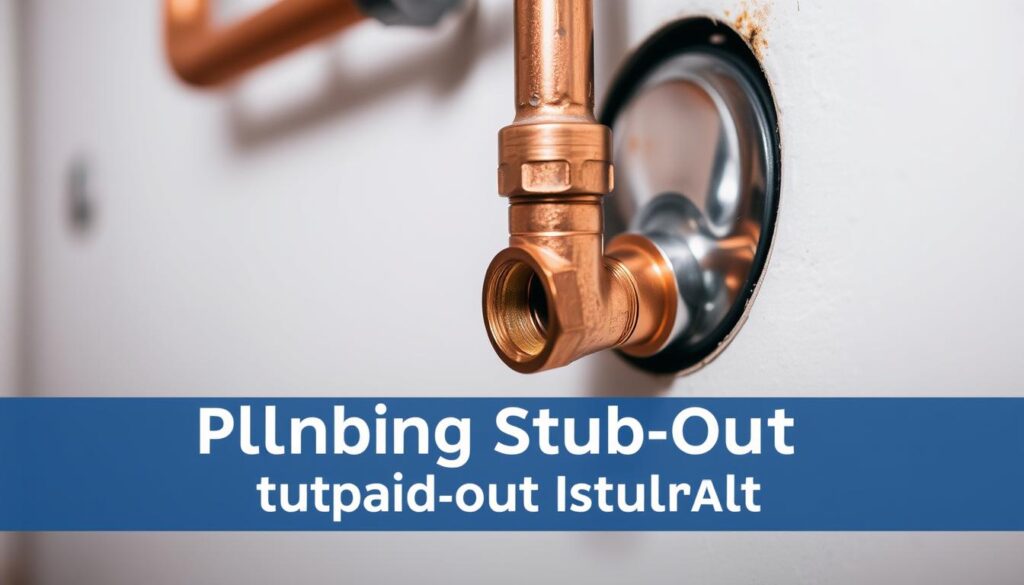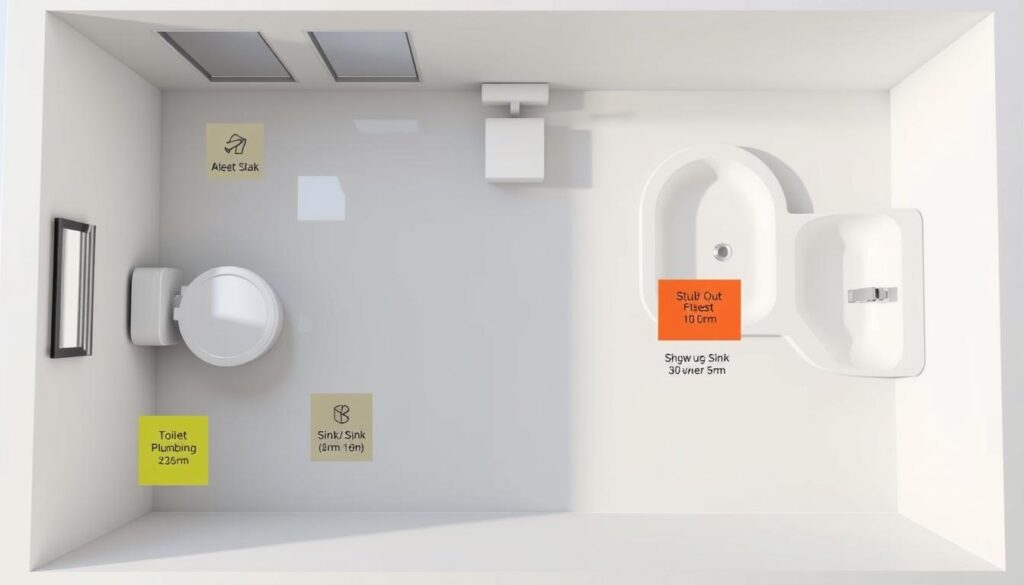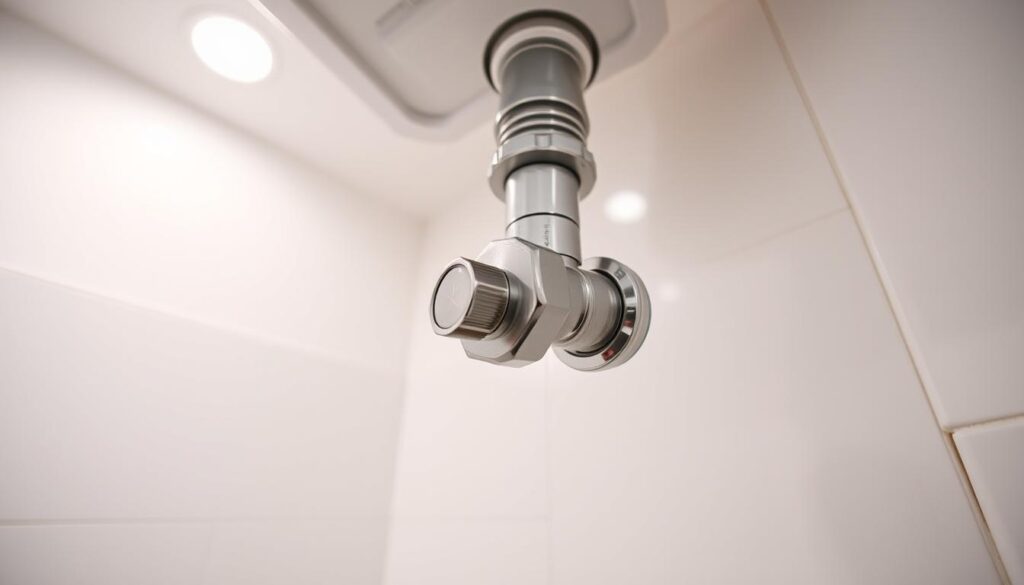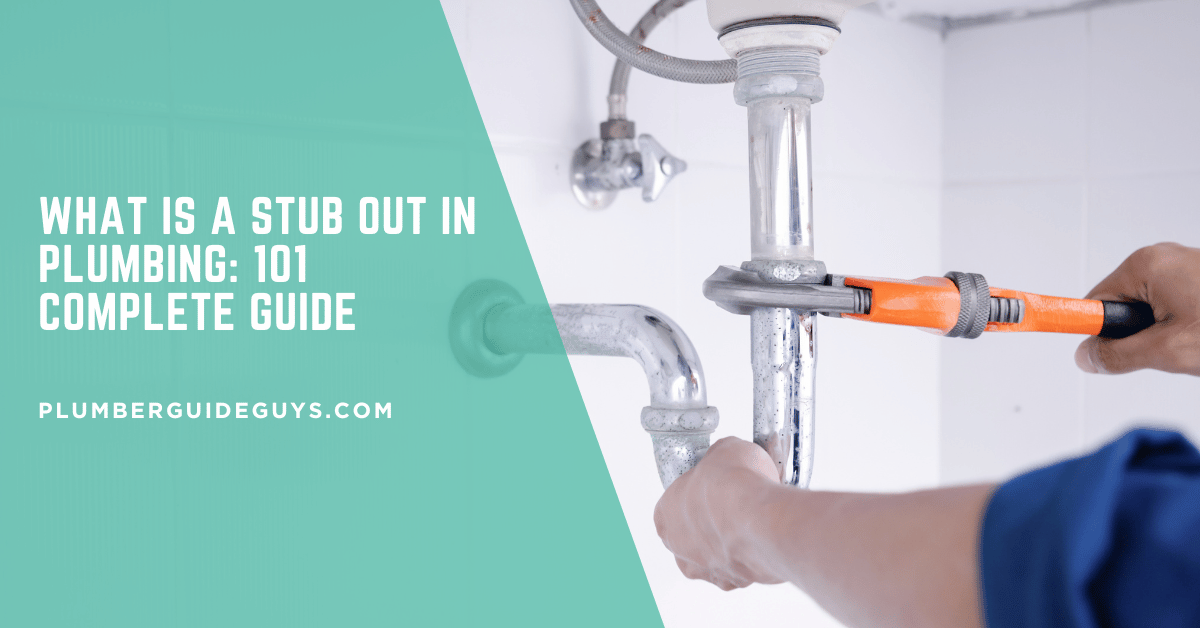Affiliate Disclosure
Plumber Guide Guys is a participant in the Amazon Services LLC Associates Program, an affiliate advertising program designed to provide a means for sites to earn advertising fees by advertising and linking to Amazon.
What Is a Stub Out in Plumbing? Ever thought about how plumbers get ready for future jobs without messing up your walls or floors? It’s all about a smart plumbing trick called stub outs.

A plumbing stub out is a key spot for adding or changing plumbing later. It’s a pipe that sticks out from your plumbing system. It’s capped and ready for future connections.
When you’re thinking about home makeovers or upgrades, knowing about plumbing stub outs is key. These hidden parts are the heroes of flexible homes. They let homeowners easily change their living spaces.
Key Takeaways
- Stub outs serve as pre-planned connection points for future plumbing needs
- They allow flexible modifications without extensive demolition
- Critical for residential and commercial plumbing systems
- Helps prevent costly and disruptive future renovations
- Provides strategic planning for future space upgrades
Affiliate Disclosure
Plumber Guide Guys is a participant in the Amazon Services LLC Associates Program, an affiliate advertising program designed to provide a means for sites to earn advertising fees by advertising and linking to Amazon.
Understanding Plumbing Stub Outs: Basic Definition
Plumbing stub outs are key in building and fixing up homes. They connect to future water and drainage systems. Knowing about stub outs can save you time and money when planning or remodeling.
There are different types of plumbing stub outs for various needs. You’ll find them in homes and businesses, each with its own purpose.
Dead-End Plumbing Connections
Dead-end plumbing connections are very important. They:
- Allow for adding fixtures later
- Make building designs more flexible
- Support expanding systems
Common Stub Out Locations
Stub outs are found in key spots like:
- Kitchen sink areas
- Bathroom vanities
- Laundry room water lines
- Outdoor irrigation systems
Purpose and Functions
Stub outs do more than just hold pipes. They are special pipe ends for future connections. They’re great for projects where you can’t install fixtures right away.
| Stub Out Type | Typical Length | Common Applications |
|---|---|---|
| Water Supply | 3-6 inches | Faucets, Toilets |
| Drainage | 6-10 inches | Sinks, Showers |
| Future Expansion | Varies | Potential Room Additions |
Knowing about stub outs helps you plan your plumbing better. It makes your project more flexible and efficient.
The Essential Components of Plumbing Stub Outs
Understanding the key components is vital for a plumbing project’s success. These elements are the foundation of your plumbing system’s connections and function.
- PVC or ABS pipes
- Pipe caps and plugs
- Threaded or slip fittings
- Valves for water control
Choosing the right materials for PVC stub out installation is important. Different materials have different uses:
| Material | Best Used For | Durability |
|---|---|---|
| PVC | Drainage and cold water lines | Excellent corrosion resistance |
| CPVC | Hot water applications | High temperature tolerance |
| ABS | Underground drainage | Impact resistant |
Before starting stub out installation, you need the right tools and parts. Measuring and aligning correctly is key for a good plumbing connection.
Precision in stub out installation can prevent future plumbing complications and expensive repairs.
For a successful installation, pick the right pipe sizes. Use the right sealing methods. Also, make sure the plumbing is well-supported for future connections.
What Is a Stub Out in Plumbing and Why You Need It
Stub outs are key parts of modern plumbing systems. They offer flexibility and planning for your home’s plumbing. Knowing about stub outs helps you plan for your home’s plumbing needs.
A plumbing stub out is a planned spot for future plumbing changes. It lets homeowners easily add or change plumbing without big problems.
Benefits of Installing Stub Outs
Stub outs have many benefits for plumbing:
- They let you add fixtures without big renovations
- They avoid disrupting your home’s plumbing
- They make it easy to improve your home
- They prevent damage when adding new plumbing
Future-Proofing Your Plumbing System
Stub outs help future-proof your home’s plumbing. They let you plan for changes and new technologies. This way, your plumbing stays up-to-date with your needs.
Cost-Saving Advantages
Stub outs save you money in the long run. They let you add new fixtures easily, saving on labor and materials.
Strategic stub out placement is like creating a blueprint for future home improvements.
For new tech like greywater systems, stub outs are a smart move. Even if current systems don’t fit your needs, stub outs prepare you for future upgrades.
Professional Installation Requirements and Building Codes
Understanding professional requirements and building codes is key for safe plumbing systems. Local rules are important for these essential connections.
Professional plumbers must follow strict guidelines. This includes plumbing rough-in measurements and stub out installations. These rules protect homeowners and ensure proper infrastructure.
“Compliance with local building codes is not optional—it’s a fundamental requirement for safe plumbing installations.” – Professional Plumbing Association
Key professional installation requirements include:
- Obtaining necessary municipal permits
- Following precise plumbing rough-in measurements
- Ensuring proper material selection
- Documenting installation specifications
- Passing required inspections
Different places have their own rules. So, it’s important to check with local building departments. Certified plumbers know these rules well and can handle complex code requirements.
The California Plumbing Code is a good example. For instance, graywater stub-out plumbing must be permanently marked with clear safety warnings. This shows how detailed professional plumbing standards are.
Proper Stub Out Measurements and Placement Guidelines
Getting the plumbing right is key for your home’s setup. Knowing where and how big to make bathroom stub outs can save you a lot of hassle and cash later.
Experts say that precise measurements are the base of a good plumbing system. When placing your stub outs, think about a few important things.
Standard Height Requirements
Here are some common height rules for plumbing:
- Bathroom sink: 18-22 inches from the floor
- Toilet: 12-14 inches from the finished floor
- Shower valve: 48-52 inches from the floor
- Tub spout: 18-20 inches above the tub rim
Distance from Walls and Fixtures
Where you put your bathroom stub outs is also important:
- Toilet centerline: 15 inches from side walls
- Sink: 4-6 inches from wall studs
- Shower: Minimum 15-inch clearance from adjacent walls
Depth Considerations
“Depth matters as much as height in plumbing stub out installations,” says master plumber Richard Martinez.
Remember these depth tips for your plumbing:
- Exterior grade level is ideal for accessibility
- 6 inches below ground is acceptable
- Avoid placing stub outs deeper than 12 inches on flat lots
Spending time on your plumbing plans makes your home’s plumbing better and more flexible.
Kitchen and Bathroom Stub Out Specifications
Designing bathroom stub out locations needs precision and careful planning. It’s key to place drain lines right for efficient plumbing in your home’s key areas. Knowing what each fixture needs helps create a smooth and useful plumbing system.

When planning bathroom stub out locations, consider these key specifications:
- Toilet stub outs typically require 12-15 inches from the wall’s center
- Vanity sink drain lines need precise positioning near cabinet bases
- Shower drain lines must align perfectly with fixture dimensions
Kitchen plumbing has its own challenges for drain line stub out placement. Your kitchen’s layout is key for placing various appliances and fixtures right.
| Fixture | Recommended Stub Out Location | Standard Distance |
|---|---|---|
| Kitchen Sink | Center of sink base cabinet | 12-18 inches from wall |
| Dishwasher | Adjacent to sink cabinet | 24 inches from wall |
| Ice Maker | Refrigerator proximity | 6-12 inches from appliance |
Professional plumbers say strategic stub out placement is smart. It helps with future changes and saves money on big fixes. Careful planning today can save significant expenses tomorrow.
Proper stub out placement is an investment in your home’s long-term functionality and value.
Common Mistakes to Avoid During Stub Out Installation
Installing plumbing stub outs needs precision and planning. Both pros and DIY folks often make big mistakes. These errors can mess up your plumbing system. Knowing these common mistakes can save you time, money, and stress.
When you’re working on plumbing, it’s key to know what not to do. Let’s look at the top mistakes that can mess up your stub out installation.
Incorrect Sizing Issues
Pipe size is key for plumbing success. Wrong sizes can cause big problems:
- Choosing pipes too small for water flow
- Using pipes too big, which lowers water pressure
- Not matching pipe sizes in different parts
Positioning Errors
Where you put stub outs is very important. It affects how well they work and how easy they are to use:
- Putting stub outs too near walls or other parts of the building
- Not leaving enough space for connections
- Measuring the height wrong for fixtures
Material Selection Problems
Picking the right materials is vital for plumbing that lasts:
| Material | Common Issue | Potential Consequence |
|---|---|---|
| PVC | Using the wrong grade | Pipes can break down too soon |
| Copper | Wrong wall thickness | Leaks are more likely |
| Galvanized Steel | Used in places where it can rust | Pipes don’t last as long |
Knowing these common mistakes helps make your pvc stub out installation better. Always check with experts and local rules before starting plumbing work.
Maintenance and Troubleshooting of Plumbing Stub Outs
Keeping your drain line stub outs in good shape is key for your plumbing system’s health. Knowing what a stub out is helps homeowners avoid water damage and expensive fixes.

Regular checks on your plumbing stub outs can stop big problems. Here are some tips to keep your drain line stub outs working well:
- Inspect stub outs every three months for corrosion or damage
- Keep exposed stub outs capped when not in use
- Look for water stains or moisture around stub out connections
- Make sure seals are tight to avoid leaks
“Prevention is always better than expensive repairs in plumbing maintenance”
Watch out for these signs of stub out trouble:
- Unusual smells near drain line stub outs
- Visible rust or mineral buildup
- Water pooling around stub out areas
- Unexplained moisture on walls or floors
If you see these problems often, call a professional plumber. Acting fast can save you a lot of money and prevent damage to your home.
Conclusion
Knowing what a stub out in plumbing is key for a flexible home water system. These parts are vital for future plumbing needs. They let homeowners update their systems easily without big changes.
Stub outs are important for planning your plumbing. They are special points on your main lines for adding fixtures. Getting them installed right and measuring carefully keeps your system flexible and affordable.
How you handle stub outs affects your home’s future. Plumbers suggest careful planning and following local codes. This way, stub outs save you money and hassle later on.
Think of stub outs as smart planning for your home’s plumbing. They help you keep and grow your water system easily and efficiently.

